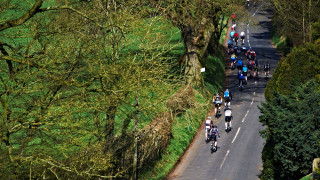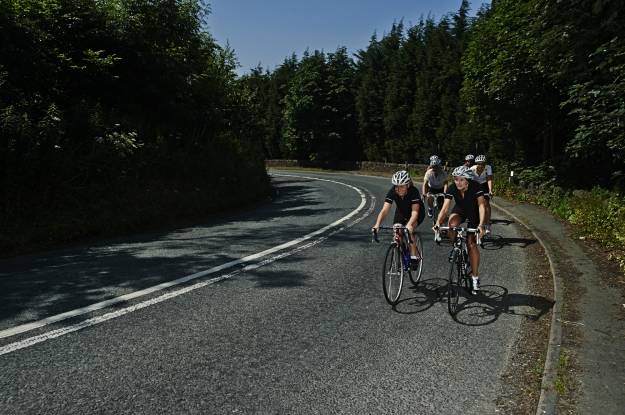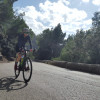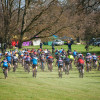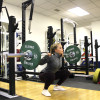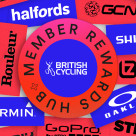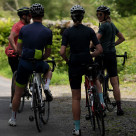Knowledge Level: Intermediate
With the demands of work and family, finding the time to ride your bike can be tricky. However by following these ten top tips, you can make the most of the time you do have, recoup some lost minutes and maximise the gains from your weekly mileage.
Following a structured training plan, such as the British Cycling Training Plans, is the best way to make the most of your available training time. With each session planned and in your diary, you avoid having to waste time thinking about what you should be doing and if the time is fixed, it is less likely to get bumped. If you feel as though you need a more tailored plan to fit around your life, consider employing the services of a Level 3 British Cycling Coach. Part of the process of working with a coach is for you to let them know the time you have to train and for them to optimise the plan based on that information.
Ride with purpose
There is nothing wrong with just going out for a ride but, if you want to improve your performance and make the most of your limited riding time, then every ride should have a definite purpose, structure and goal. This will all be part of following a structured training plan but the key is using objective measures of intensity and performance. Without monitoring intensity, most riders make the mistake of riding too hard when they are supposed to be riding easy and too easy when they should be riding hard. They end up riding in a physiological no-man’s land that has limited benefit and simply builds fatigue. By training using accurately determined heart rate or power zones and using these to construct strict session goals, every pedal stroke can be made to count.
The indoor trainer is your friend
If time isn’t on your side, comes in unpredictable chunks or you just can’t leave the house, then having an indoor trainer set-up and ready to go is a must. There is no kit to get ready, no worries about the weather and you can just hop on and blast out a worthwhile session in as little as 20 minutes. Discover the pros and cons of the different types of trainers, how to get the most out of using one and some essential sessions.
Recovery is key
With every session counting, it is essential that you are fully recovered from each workout and that your last session doesn’t have a detrimental impact on the quality of your current one. Prudent training programme construction and strict monitoring of intensity play a major part in this but so does having a well rehearsed recovery routine.
Quality not quantity
If time is short, there is little point in riding at lower intensities that need hours in the saddle to have a significant effect. If you are targeting sportives or longer road races, you will need a certain amount of base endurance fitness but the 30-35 hour epic training weeks that professional riders put in over winter simply aren’t necessary or realistic for amateur riders. Train smart during the week following the tips above and a suitable training plan, budget in some time at the weekends for longer rides and you will be able to tackle all but the most arduous events.
If you are really struggling for time, consider targeting races or forms of cycle sport that don’t require quite as much pure endurance. Shorter time trials, such as 10-mile events, track racing, cyclocross and circuit racing are all options that are suited to time pressed riders.
Preparation and organisation
If you have got some precious time to ride, you don’t want to waste it searching for kit, filling water bottles or fixing mechanical problems. Keep your cycling kit really organised, have several sets of clothing and get clothing, equipment, food and drink ready to go in advance as much as possible. Get into the habit of checking your bike over at the end of every ride, paying particular attention to the tyres and checking for flints, thorns, slow punctures or damage. Wipe it clean and dry and, if necessary, de-grease and re-lube the drivetrain. It is only a five-minute job and will prevent any potential ride delaying surprises the next time you head out.
Use commutes and trips
If you are able to commute by bike, use this as an opportunity to train rather than just riding casually into work. Look here for workouts to incorporate into your commute and, if it is an option for the ride home, consider adding some extra distance.
With a bit of planning, many outings, trips and errands can easily be turned into rides. Arrange to meet the family at your final destination or, if it is too far, a suitable point along the way.
Nail your nutrition
If you are doing everything you can to maximise the effectiveness of your training, you should really apply the same to your nutrition. Optimising what you eat pre, during and post ride will significantly impact on your performance in that and subsequent workouts. If your training time is limited, you won’t be burning enough calories on the bike to give you free rein with eating or you might just want to shed a few pounds to improve your performance on the climbs. Take a look at these British Cycling recipes for some nutrition ideas.
Something is better than nothing
It is incredibly easy to adopt a mindset where, if you can’t get out for two hours plus on the bike, it is not worth doing anything. However, something is always better than nothing and even if you haven’t got the time for a ride or access to a bike, you could still be doing something that can improve your riding.
Running is an excellent lunch break option, is perfect for keeping your fitness topped up if you are away without your bike and is ideal on dark evenings or in poor weather. Follow this advice on different cross training options and how to incorporate them into your routine.
Even if you just have ten minutes you can work through this mobilisation routine from the physiotherapy and rehad support staff for the Great Britain Cycling Team, or if you don't have the time for the full routine, just spend a couple of minutes on one or two of the exercises.
Work on your weaknesses
Take a long, hard and honest look at your riding and identify your weakest area as this is where you could stand to make the greatest and quickest gains. A coach or a trusted club mate could give you a useful objective opinion if you need one. You will often find it will be the type of riding you least enjoy but, with a bit of dedication and willpower, by making this weakness a strength, or at least less of a chink in your riding armour, you will become a more rounded and stronger rider.

